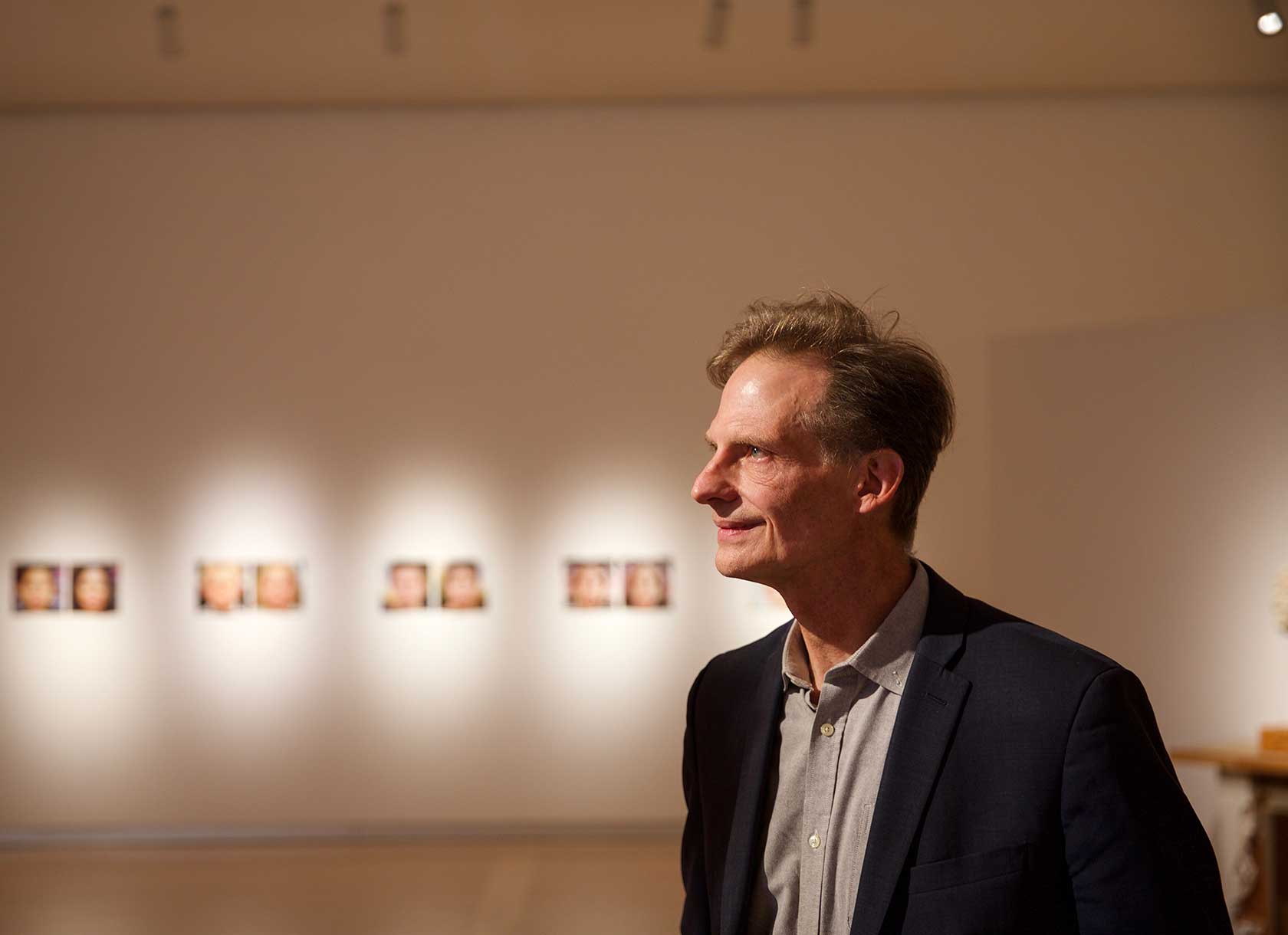
On October 30, the Ruth Chandler Williamson Gallery opened the second half of LA Edge, a two-part exhibition showcasing the work of Scripps faculty from the departments of art and media studies. The exhibition’s intersectional works explore a variety contemporary issues, from questions of home and belonging to artificial intelligence to the biases embedded in teaching evaluations.
This last topic is the focus of Professor of Art Kim-Trang Tran’s Excellent Satisfaction, a video that examines the racial and gender biases in student evaluations. Tran says the project was inspired by Scripps’ 2016 change to its student evaluation format, which shifted from an emphasis on numerical ratings to questions and short comments. To create the video, she compiled some of the best-known films about female teachers and edited them to form a new narrative, set to a poem about Tran’s own teaching and evaluation experience over a 16-year period.
“Teaching is hard work that is at once challenging and rewarding, and much of the time, course evaluations measure student satisfaction more than teaching effectiveness,” she says. While research has shown that women—especially women of color—fare worse on numerical evaluations due to gender and racial biases, Tran wanted to approach the issue from a different angle, crafting a narrative out of the message that popular movies send about female teachers’ effectiveness in the classroom. “In the exercise of animating and creating patterns out of these numbers,” she explains, “I am exorcising the self-doubt, hurt, and negativities for my well-being, given the gender and race biases.”
Doug Goodwin, Fletcher Jones Scholar in Computation and visiting assistant professor in media studies, is similarly focused on disrupting inherent biases. His work, Binaries: Synthetic Gender, is a series of gendered human portraits made from software trained on a dataset of 70,000 photos collected from the image sharing site Flickr.
Binaries critiques the fact that, although machines will soon be able to generate photographs that are indistinguishable from portraits of real people, portraits created via artificial intelligence maintain a narrow view of what a human is, in terms of age, race, and especially gender, ignoring social challenges to the gender binary. In part because of this inability, Goodwin explains, humans are coming to a critical juncture in their relationship with artificial intelligence. “Do we want to share more of humanity with computers, so that they learn more of our complexity? Do we tell them to stop, and if we do, would they? I don’t think they would,” he says. “So, we may have to play along—and I’m not sure yet what that looks like.”
Assistant Professor of Media Studies Carlin Wing’s works engage more with physical, rather than digital, spaces. Three of her works are on display, two of which focus on play and place: Los Angeles Plays (2018–), a series of discarded playing balls collected across Los Angeles County, and Ball Ellipsis 3 (2021), three chewed, broken, and refilled handballs.
“Like many artists, I have a habit of collecting stray things—pencil shavings, pennies, paper cranes, playing balls,” she says, adding that she began collecting discarded balls around Los Angeles in 2018, while writing a chapter on the history of rubber and sport and collaborating on an exhibition about improvisational play. “Playing balls are one of the many kinds of ubiquitous objects that connect everyday gestures to global histories. . . . Piled together, these playing balls conjure something of their city.”
Wing’s collecting habit extends to spaces: Ceilings Where I Sleep (2005–) is a photographic catalog of every ceiling she’s slept under since 2005; a selection of this catalog is on display under the title Being at Home. “Nineteen months into a global pandemic, the question of being at home is at the surface for many,” she explains, adding that the answer to such a question is ever-changing: “[It’s] an ongoing practice that shifts with the many shifting valences of being at home in the world.”
She chose to exhibit an excerpt from this collection in part because she started the project when she was 25 years old and working as a teaching assistant in Harvard’s visual and environmental studies program, as it was then known. “I wanted our students to see an example of a project that I began when I was close to their age, so that they can imagine starting work now that might still be unfolding twenty years in the future,” she says.
LA Edge will run through December 13 and features work by Tran, Goodwin, Wing, visiting lecturer Vivian Charlesworth; Associate Professor of Art Adam Davis, Assistant Professor of Art Kasper Kovitz, and Assistant Professor of Art Aly Ogasian. Additional information, including the Williamson Gallery’s hours and timed entry reservation system, is available on the College’s website.

